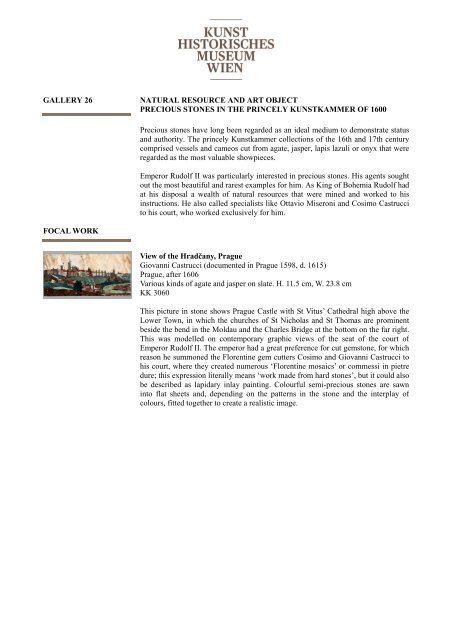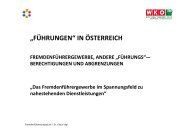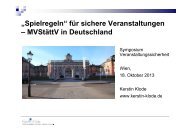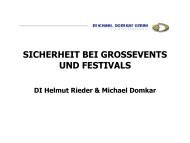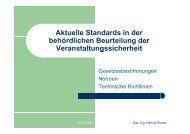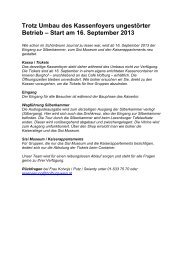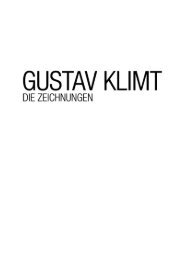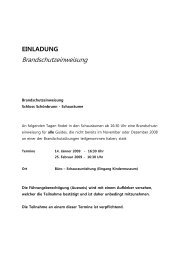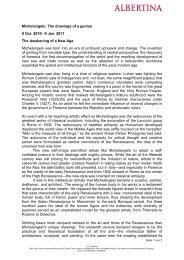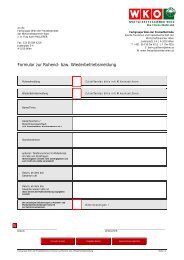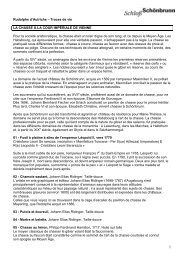kunstkammer vienna the cradle of the museum - Freizeitbetriebe ...
kunstkammer vienna the cradle of the museum - Freizeitbetriebe ...
kunstkammer vienna the cradle of the museum - Freizeitbetriebe ...
You also want an ePaper? Increase the reach of your titles
YUMPU automatically turns print PDFs into web optimized ePapers that Google loves.
GALLERY 26 NATURAL RESOURCE AND ART OBJECT<br />
PRECIOUS STONES IN THE PRINCELY KUNSTKAMMER OF 1600<br />
FOCAL WORK<br />
Precious stones have long been regarded as an ideal medium to demonstrate status<br />
and authority. The princely Kunstkammer collections <strong>of</strong> <strong>the</strong> 16th and 17th century<br />
comprised vessels and cameos cut from agate, jasper, lapis lazuli or onyx that were<br />
regarded as <strong>the</strong> most valuable showpieces.<br />
Emperor Rudolf II was particularly interested in precious stones. His agents sought<br />
out <strong>the</strong> most beautiful and rarest examples for him. As King <strong>of</strong> Bohemia Rudolf had<br />
at his disposal a wealth <strong>of</strong> natural resources that were mined and worked to his<br />
instructions. He also called specialists like Ottavio Miseroni and Cosimo Castrucci<br />
to his court, who worked exclusively for him.<br />
View <strong>of</strong> <strong>the</strong> Hradčany, Prague<br />
Giovanni Castrucci (documented in Prague 1598, d. 1615)<br />
Prague, after 1606<br />
Various kinds <strong>of</strong> agate and jasper on slate. H. 11.5 cm, W. 23.8 cm<br />
KK 3060<br />
This picture in stone shows Prague Castle with St Vitus’ Ca<strong>the</strong>dral high above <strong>the</strong><br />
Lower Town, in which <strong>the</strong> churches <strong>of</strong> St Nicholas and St Thomas are prominent<br />
beside <strong>the</strong> bend in <strong>the</strong> Moldau and <strong>the</strong> Charles Bridge at <strong>the</strong> bottom on <strong>the</strong> far right.<br />
This was modelled on contemporary graphic views <strong>of</strong> <strong>the</strong> seat <strong>of</strong> <strong>the</strong> court <strong>of</strong><br />
Emperor Rudolf II. The emperor had a great preference for cut gemstone, for which<br />
reason he summoned <strong>the</strong> Florentine gem cutters Cosimo and Giovanni Castrucci to<br />
his court, where <strong>the</strong>y created numerous ‘Florentine mosaics’ or commessi in pietre<br />
dure; this expression literally means ‘work made from hard stones’, but it could also<br />
be described as lapidary inlay painting. Colourful semi-precious stones are sawn<br />
into flat sheets and, depending on <strong>the</strong> patterns in <strong>the</strong> stone and <strong>the</strong> interplay <strong>of</strong><br />
colours, fitted toge<strong>the</strong>r to create a realistic image.


